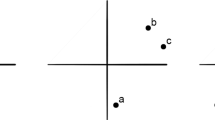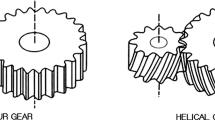Abstract
A reading is given of Curie's Principle that the symmetry of a cause is always preserved its effects. The truth of the principle is demonstrated and its importance, under the proposed reading, is defended.
“As far as I see, all a priori statements in physics have their origin in symmetry.” (Weyl, Symmetry, p. 126)
Similar content being viewed by others
REFERENCES
Chalmers, A. F.: 1970, ‘Curie's Principle', British Journal for the Philosophy of Science 21, 133–48.
Curie, P.: 1894, ‘On Symmetry in Physical Phenomena, Symmetry of an Electric Field and of a Magnetic Field', Journal de Physique 3, 401.
van Fraassen, B. C. 1989, Laws and Symmetry, Oxford University Press, Oxford.
van Fraassen, B. C.: 1991, Quantum Mechanics: An Empiricist View, Oxford University Press, Oxford.
Radicati, L. A.: 1987, ‘Notion of Symmetry Breaking', in M. Doncel, A. Hermann, L. Michel and A. Pais (eds.), Symmetries in Physics (1600–1980): Proceedings of the First International Meeting on the History of Scientific Ideas, Bellaterra, Barcelona.
Author information
Authors and Affiliations
Rights and permissions
About this article
Cite this article
Ismael, J. CURIE'S PRINCIPLE. Synthese 110, 167–190 (1997). https://doi.org/10.1023/A:1004929109216
Published:
Issue Date:
DOI: https://doi.org/10.1023/A:1004929109216




